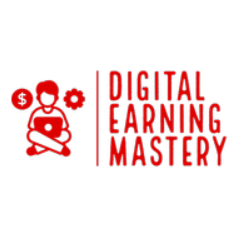Ready to start freelancing? Learn step-by-step how to land your first freelance client in 2025 even if you have no experience or portfolio yet.
—A Guide for Freelancers Ready to Get Paid
So, you’ve finally made the decision. You’re going to dive into freelancing. No more waiting, no more second-guessing. You’ve got skills, passion, and a browser full of bookmarked “How to Get Clients” articles.
But here’s the thing: most of those guides are vague or outdated. 2025 is a different beast. The freelancing world is more saturated, more competitive but also richer with opportunity than ever before. You just need to know how to navigate it.
Here’s your detailed, step-by-step guide to landing your first freelance client this year.
Step 1: Know What You’re Selling (and to Whom)
Let’s start with a question: “What problem do you solve, and who cares the most about that problem?”
That’s your niche. And no, this isn’t just about picking a “category” like “graphic design” or “copywriting.” It’s about finding the overlap between your skills and someone else’s pain point.
Example:
“I’m a designer” → too broad.
“I design scroll-stopping Instagram ads for small skincare brands” → now we’re talking.
Don’t be afraid to niche down, especially when you’re starting. Being a big fish in a small pond is much easier than trying to stand out in the ocean.
Step 2: Build a “Minimum Viable Portfolio”
Yes, you need a portfolio. No, it doesn’t have to be fancy or filled with paid work.
If you’re just starting out, do 3–5 sample projects that showcase your skill and style. These can be self-initiated, mock-up client briefs, or work done for a friend’s business.
Include:
- A short explanation of the goal
- What you did and why
- The results (real or hypothetical)
Put these on a clean, simple site. Use platforms like Notion, Carrd, or a free portfolio builder. Perfection is the enemy of launch.
Step 3: Optimize Your Online Presence (You ARE Being Googled)
Even if you’re pitching clients directly, many will Google your name. Make sure they find something that backs up your credibility.
Checklist:
- Professional LinkedIn profile
- Portfolio site or page
- Up-to-date social media (choose one: Twitter/X, LinkedIn, or Instagram depending on your niche)
- Optional: A few posts that demonstrate expertise
This isn’t about being “influencer-level” online. It’s about showing you’re real, reliable, and know your craft.
Step 4: Pick Your First Client Acquisition Strategy
Let’s keep it real: your first client probably won’t come from passive job boards. You’ll need to go out and get them.
Here are 3 beginner-friendly strategies that work in 2025:
Cold Outreach (Done Right)
Find 10–20 potential clients, research them, and send personalized messages offering value.
Bad example:
“Hey, I’m a freelancer. Need help?”
Good example:
“Hey Sarah, I saw your Shopify store has some great products but your product descriptions could convert better. I’m a copywriter who helps ecom brands like yours increase sales with sharper copy. Would love to offer a quick audit if you’re open to it.”
Tools to help: Hunter.io, LinkedIn Sales Navigator, Google Sheets for tracking
Freelance Marketplaces (Strategic Use)
Yes, they’re crowded—but they can be powerful if you play smart.
Start with platforms like:
- Upwork (build a solid profile and niche down)
- Contra or Fiverr Pro (great for creatives)
- Toptal (if you’re experienced)
Start small, charge fairly, and collect great reviews. Apply to gigs where your niche-specific offer makes you stand out—not the generic “500 people applied” gigs.
Tap Your Existing Network
Many people overlook this.
Post on your LinkedIn, IG stories, or WhatsApp status:
“Hey friends! I’m officially offering [your service]. If you or someone you know needs help with [the specific problem], feel free to reach out or share!”
You’d be surprised how often someone goes, “Oh! My friend actually needs this.”
Step 5: Make Your First Job Count
Your first client is more than a paycheck. It’s your first case study, testimonial, and referral opportunity.
Go above and beyond. Be easy to work with. Communicate clearly and often. Deliver early if you can. Follow up after delivery with a short, friendly message asking for feedback (and possibly a testimonial).
Great clients often lead to more great clients.
Bonus: Avoid the Common Beginner Traps
Here are a few “landmine zones” for new freelancers:
- Charging too little forever – Start reasonably, but raise rates as soon as you’ve proven yourself.
- Trying to be everything to everyone – Clarity and focus beat versatility in the beginning.
- Waiting for confidence before you act – Confidence comes after doing the scary thing, not before.
Final Thoughts: You Don’t Have to Fake It
One last thing: you don’t have to pretend to be a “6-figure freelancer” or an “agency.” Clients appreciate honesty, clarity, and passion far more than inflated claims.
Say something like:
“I’m just getting started, but I’m all in and I’m committed to helping your business get great results.”
That’s human. That’s real. And that’s what gets clients in 2025.
You’ve got this. Your first freelance client isn’t some unreachable milestone. It’s one message, one conversation, and one “yes” away.
